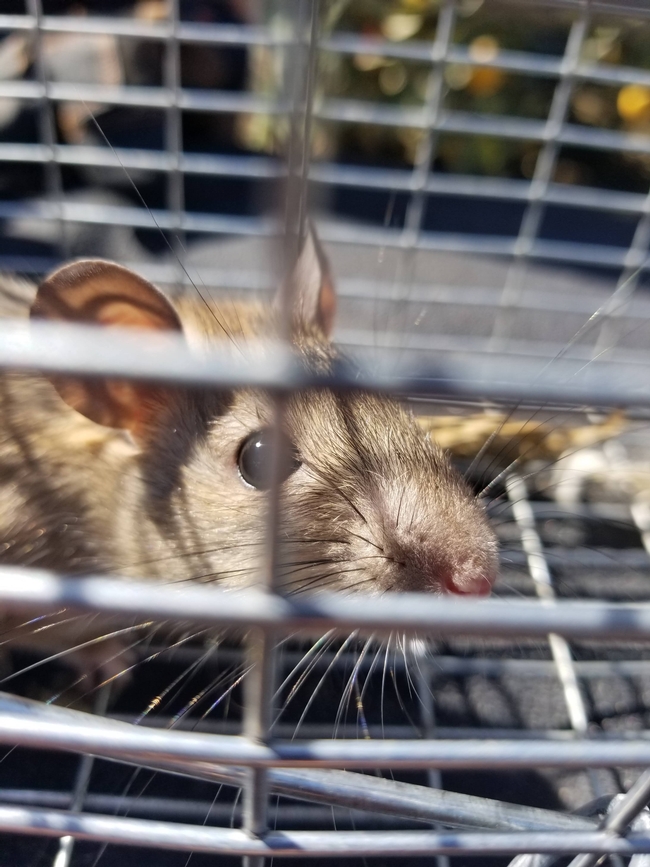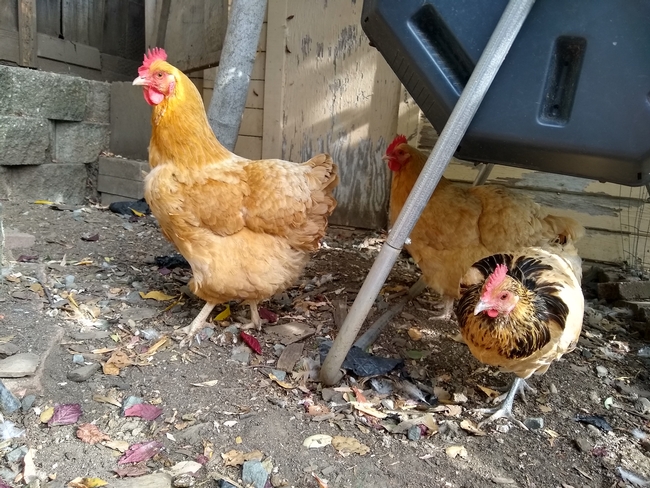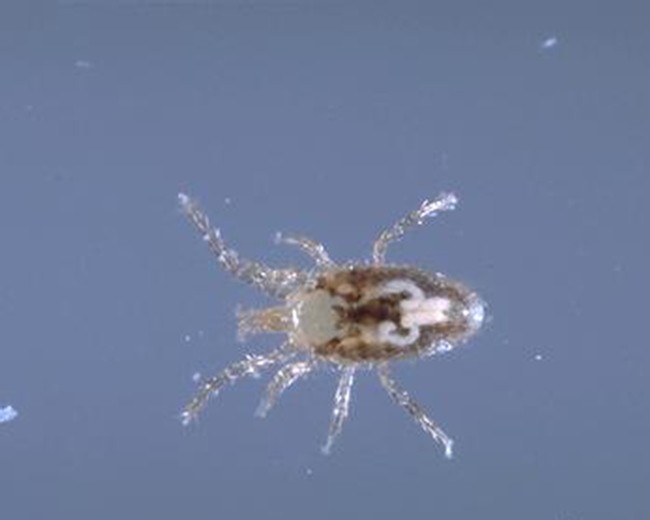Most pest management professionals have served clients who swore they were being bitten by unseen pests. Perhaps the usual suspects (bed bugs, fleas, and mosquitoes) were ruled out by thorough inspection and monitoring devices. But what about mites? There are several species of mites known to bite humans within homes and other structures, many times causing significant physical symptoms and psychological distress. Clients can easily fall prey to misinformation online when learning about these tiny pests, however, so be prepared to educate them and help them solve their problem.
In all cases, biting mites found indoors are blood-sucking nest parasites of other animals living nearby, especially rodents or birds. The most common species in California, the tropical rat mite (Ornithonyssus bacoti) (Figure 1), is often associated with the nests and runways of roof rats and other commensal rodents. Also common are northern fowl mites (Ornithonyssus sylviarum), known to inhabit nests of commensal birds, such as pigeons, starlings, sparrows, and swallows. Less common but perhaps increasing in prevalence is the chicken mite or red mite (Dermanyssus gallinae).
All three of these common species will take blood meals from humans, especially if their primary hosts have been controlled, removed, or have migrated away. For instance, successful rat control programs (Figure 2) may result in hundreds of starving rat mites wandering nearby areas in search of blood. If rats were nesting in wall voids, attics, subareas, or living spaces, then there is a good chance the resident rat mites will be attracted to the humans in the structure when the rats are no longer around.
A similar phenomenon occurs when migratory birds leave nests in autumn if nests are situated in window alcoves, eaves, or other areas abutting a living space. With the rise in popularity of backyard chickens (Figure 3), primary hosts for both northern fowl mites and chicken mites, problems can occur when coops are adjacent to walls of the home or near windows or exterior doors. Mite populations associated with chickens reportedly peak and are most likely to affect humans in spring and summer, while rat mite issues tend to be most common in late summer and autumn. Problems can occur any time of year, of course, when the primary host has been removed.
Detecting Mites

Such monitoring tools can also give clues as to where the nest of the primary host is or was. In multi-unit housing situations, the source of these wandering mites may be in adjacent units, the hallway, stairwells, or utility areas. In single-family homes, the source may even be outside, such as a bird or rat nest in the landscape. Tropical rat mites are known to travel along pipes, utility wires, tree branches, fencing, and exteriors of structures to find new hosts.
Identifying Mites
The best way to confirm a biting mite issue is to capture a specimen. Though very small (about 1/16 inch (1.5 mm) or less in diameter), all three common species can be observed without magnification. Mites may be yellowish or whitish before feeding but will be dark red when engorged with blood. Ask the client about areas of the home where bites are most common. When active, mites may be seen crawling on walls, floors, or furniture. For positive identification, mites should be captured alive and preserved in rubbing (isopropyl) alcohol or ethanol (at least 70%). This can be accomplished with the help of a fine wet paintbrush and a ready vial of alcohol.
Identification to species requires clearing and slide mounting of the specimen and close examination by an acarologist (mite specialist). Some county vector control programs can identify mite specimens and some entomologists can prepare and photograph specimens, but there are few acarologists in California who may be able to provide identification services. Be prepared for such positive identification to take a week or longer.
Managing Mites
Once mites have been confirmed, management should focus on removal of the primary hosts and their nests. Humans are incidental hosts and are not known to support reproducing populations of Ornithonyssus and Dermanyssus. That means that, in theory, once the rat or bird hosts have been eliminated from the structure, the mites will slowly die. Depending on temperature, season, and mite life stage, however, this could take weeks. Some experts report that tropical rat mites can survive without primary hosts for six weeks or longer, feeding incidentally on humans and their pets that entire time, often causing red itchy welts.

Biting mites may be more common than we realize, escaping detection due to their small size and their cryptic habits. Much research still needs to be done to better understand the biology and ecology of these pests as well as to develop effective monitoring and management tools. Sometimes, mites cannot be detected, and rodents and birds are seemingly not present, but your client's dermal symptoms (“bites”) persist. In such cases, it may be prudent to consider other causes of dermatitis, such as environmental irritants, reactions to medications or drugs, stress, some medical conditions, or even delusional infestation (aka delusory parasitosis), a psychiatric condition. A newly revised UC IPM publication, Pest Notes: Itching & Infestation: What's Attacking Me?, may help identify the problem. To learn more about management of commensal rodents and birds, review these UC IPM titles: Rats, House Mouse, and Cliff Swallows.
[Article originally published in the Fall 2020 issue of the Green Bulletin.]
